Analysis of the display (interface of the arrangement of goods in the store)
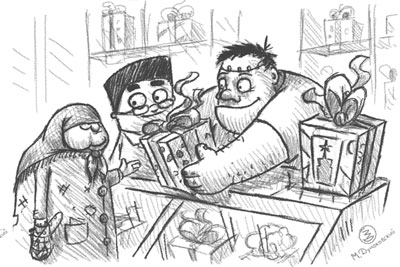
Hello! For a long time I promised to talk about the features of the calculations not at the level of educational program, but directly with a couple of examples at our points. Two important things at once:
- We can only lay out board games, and not the fact that our principles are suitable for someone else.
- The layout is far from what you need to start working with the store, it usually gives 1-5% increase in revenue. But it’s fast, almost free and nice.
But let's analyze the jambs and try to derive the principles. We approximately inductively model and finished.
The magic of novelty
You go into the store, and there on the shelf a game looks at you, pulled across by a white rubber band. This is not a game fund where all the games are already played, this is a store demo. The gum is there because sellers do so with open boxes so that they do not fall apart - otherwise the components will be lost. Gum on the game = non-commodity look.
A non-marketable view is permissible only in a markdown sale box.
A man entering a store is waiting for something neat and a little magical. If you break this magic, then the desire to buy will immediately disappear. We have repeatedly watched how just any one item, starting from dust on the edge of the shelf or a sloppy broom at the checkout, dramatically changes the store's performance.
A person reads all such signals very quickly.
But this does not mean that open games have no place in the store. They are needed for demonstration. Therefore, we keep open games behind closed, second layer. It’s necessary - we quickly get it and show it. When the game goes into a “slightly worn” state, it ends up in the sale box or in the game fund. Sometimes we have agreements with suppliers for demonstration samples: we give back the jammed ones in exchange for new ones. Suppliers use their worn games for their playrooms or give them to orphanages.
Why is magic so important? Here Valery Firstov at one time published one of the first glossy Moscow magazines about the interior - Salon. So, they began to pack it in polyethylene. And then this was done, as far as I know, only with category 18+. Sales increased: people saw that the magazine was new, no one had read it yet. Therefore, by the way, any of our games in a box is larger than a palm - always in a film or closed to a plastic seal (in the case of soft bags). It’s damn important for people to know that they bought a really untouched thing.
Counterexample - there is an excellent Hollywood quiz “ Battle of the sexes”". It costs 800 rubles per box, which you expect for 1000-1200 rubles. Inside is a pile of shaggy cards made of strange paper, the box itself is from under shoes. No shrinkage, decks tightened with elastic bands. It’s scary to give: even a new one looks as if it has been played for generations. I have already bought about five boxes, they often work with one-time quizzes for a company in some distant city, and then they do not crawl into the cabin baggage. But back to the calculation.
More chaos to the god of chaos!
Here are the games after the customers are not exactly on the edge, but scattered on the shelf. All this needs to be returned to a beautiful norm as before a photo report for the central office. Not because a perfectionist is sitting in the central office (although this is so), but because there will be more sales. At the same time, it is important not to go to the other extreme - I once saw how the senior millimeter-in-millimeter laid out everything in a shelf, so that it was scary to get the game.
If there is no affordance such as a small gap showing that the game can be picked up, it will not be watched. Aerobatics observed by the Germans is a small angle rotation so that the goods “hang” from the shelf a little bit. But it is very difficult to maintain in order.
These are the cracks:
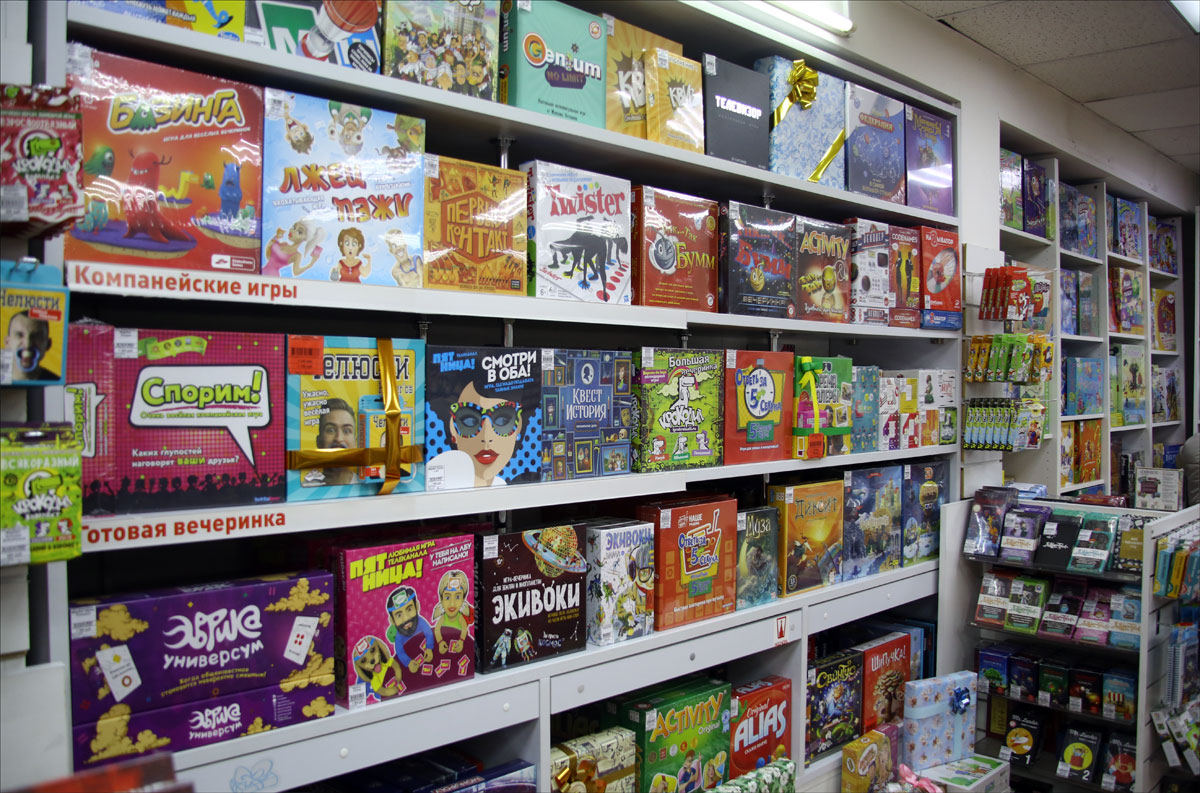
This is the same shelf in another report:

In the second picture as a whole, everything is fine. But our perfectionist from the Central Organ is confused by the “darkness” in the middle. Still in the corner lies " Startup " - a small light box. It needs at least four - two in the front and two in the second layer. Have you bought? We remove from this place, it creates a hole in the display, as if there were not enough goods in the store. In general, there is nothing worse than a hole - shelves should break from games. This directly affects sales.
At the same test, a recommendation surfaced: keep Petanque (a game with large metal-stone balls) in the calculation open. This is the other side - it’s better to get some goods and show them. Heavy steel balls made of petanque, of course, directly attract people to whistle them, but still these are not figures, and it is difficult to quietly blur them.

Here is the complete chaos in our version:
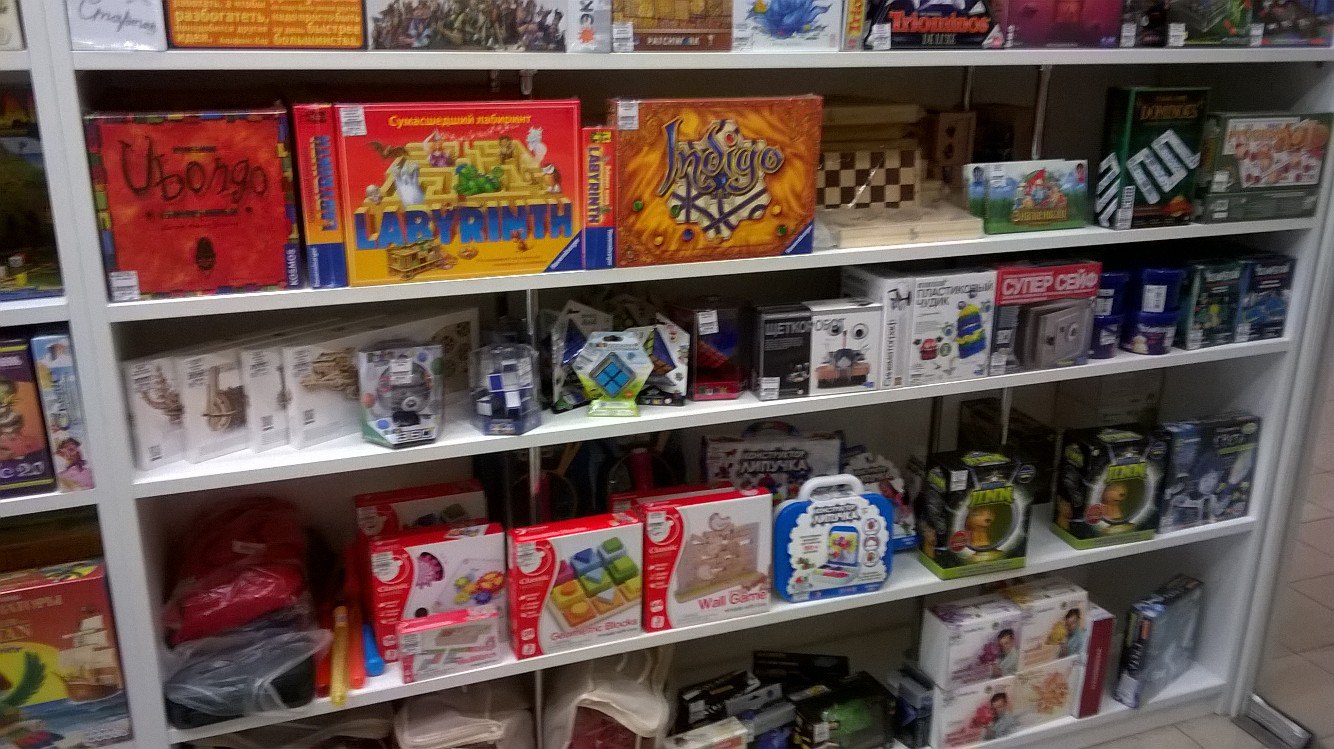
In the corner there are two plastic bags (this is a transport package), wooden designers must be put down (rear vertically) so that they can be seen. In general, the goods are also laid out in the bottom row, but it is worth using it as a drive.
At the same point, the recommendation is to collect all the games for young children for 3 years in one direction of the rack. The request is very specified, there are 20 objective games in large boxes, so this is very useful in consultation. Why - because during the consultation it will not be necessary to run around with your eyes and not drag games from different places. Otherwise, the client may decide that you are directly feverishly looking for what to give - and this, from experience, creates the impression that there is little good in the store. Well, in a consultation there is usually simply no pause for the search.
Accents
For this shelf, you need an LED strip (two pieces):

Because there (on the middle) open tables perfectly lie, they directly ask for hands. But it’s dark and scary there.
Furniture
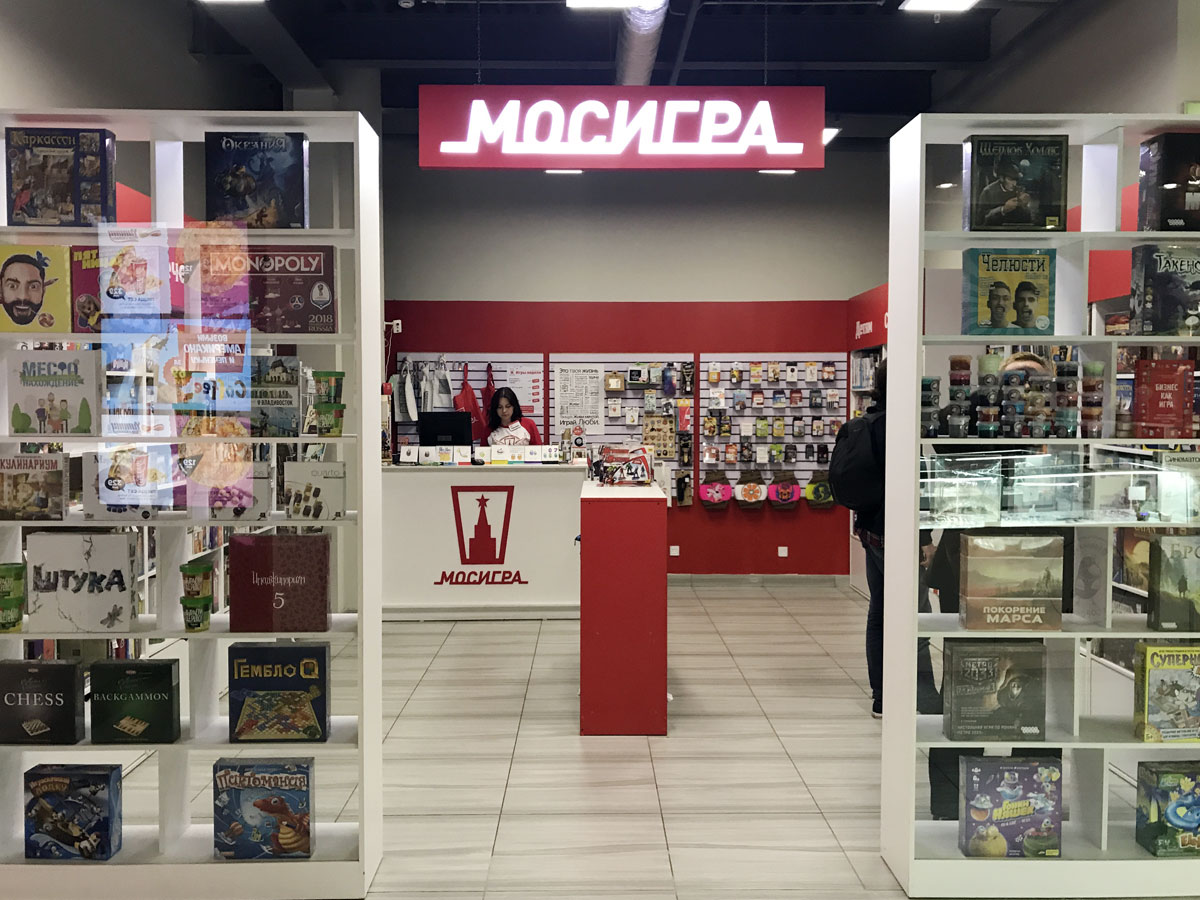
See these islands here? Furniture delimits store zones. 9 out of 10 buyers in Russia go to the right bypass branch (counterclockwise). If it is not there or it is cluttered - minus the conversion. Furniture islands or tables help to understand what and how. And immediately show the game.
On islands (mini racks) there should be either soft toys, or pyramids of games, games of the week. On the tables - open games, promotional games. In this case, the calculation error is that the end face does not work. You can stick posters there, but it’s better to put the goods there.
General principles
The calculation is divided into modules. For example, “Checkout Area”, “Toys and Designers”, “Children's Rack”, “Geek Rack” and so on. Each zone has a size - small, medium or large. The small one includes the mandatory system requirements, the large - what can be put if the place is still dofig.

In-store navigation (which is for customers) corresponds to the objects of the layout planogram. A planogram with details before the game is done once at the opening, after which the general calculation algorithms are set, which the seller can execute and check the administrator.
What if the shelves do not match? Suffer. Now the equipment is selected at the opening, and it should correspond to the features of our calculation. Specifically, be with mobile shelves (to adjust the height of the shelves for goods), with separate racks and with nets or economic panels for small goods:

When installing commercial equipment, one should not forget about the possibility of theft of goods from the store. Therefore, it is not necessary to place racks for small goods near the exit, it is better to install them next to the cash desks (we have cash desks almost always in the back of the store). Although they rarely steal from us purposefully, admittedly. But it’s better not to be tempted.
At the moment, we use a vertical and combined display, which means that goods of the same category are displayed on one rack. Typical calculation rules apply (hot zone at the hands and eyes, etc., I have already talked about this for a long time).
All products need to be put “face” at the buyer, only products of group C are exposed end-to-end and provided the store is very full. You don’t have to do this:
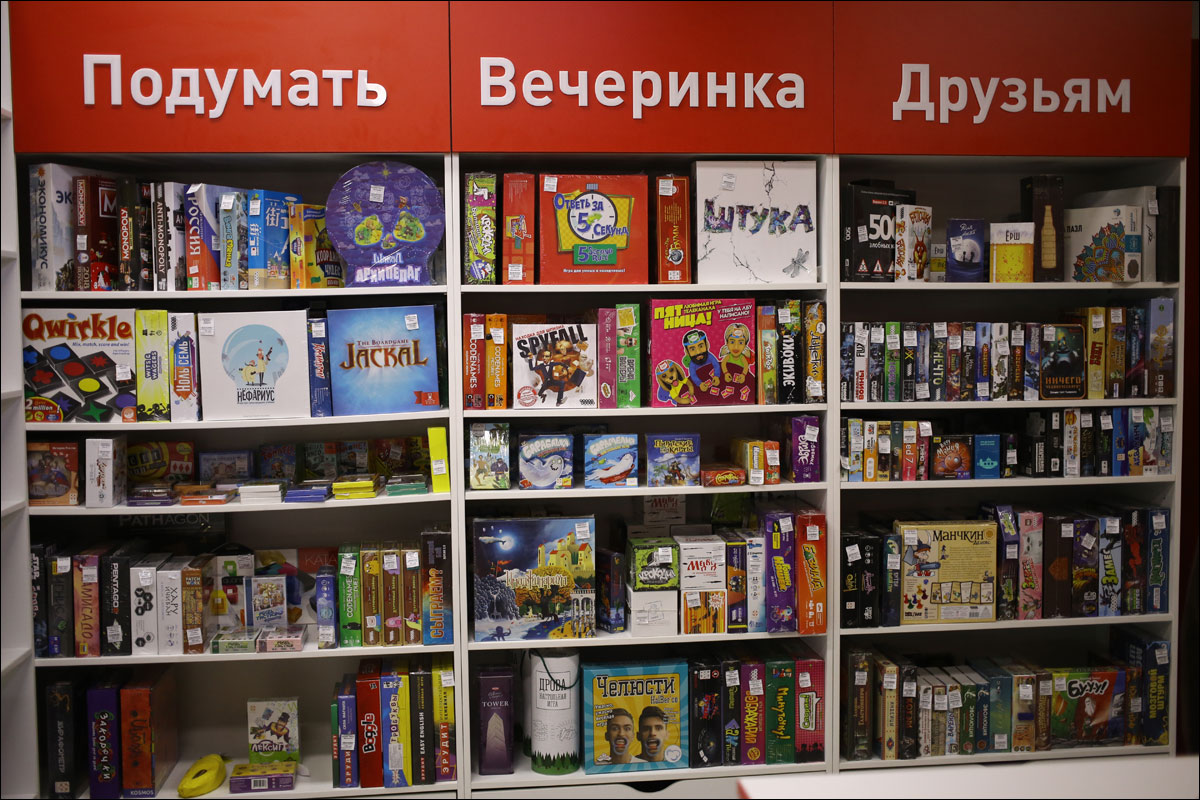
In general, cascading layout in relation to the front - as two completely different frameworks. We had a couple of cases of retraining existing teams for front-end calculations: at first it was a terrible violence against the psyche, because everything seems to be different. You need to think a lot about the need for the goods. Everything will not work out right away, so it will be necessary to think over the main and secondary. And this requires mathematics and some ability to sacrifice. We realized that you just need to lay out everything at once frontally, and then people themselves will understand that it is more beautiful and more convenient for the client in a new way.
But back to the rules. All products of group C should be located on the upper or lower shelves of the store. At the same time, bulky goods or goods with a large weight are exhibited on the lower shelves.
It is important not to mix products from different categories. When a product is presented in one category, it is easier for the seller and the buyer to orient themselves. In the sense that you can take the buyer to the corner with the games he needs and show everything there.
Here is a scan of side A from the Taganka planogram. This is the most viewed area, board games are on display here.
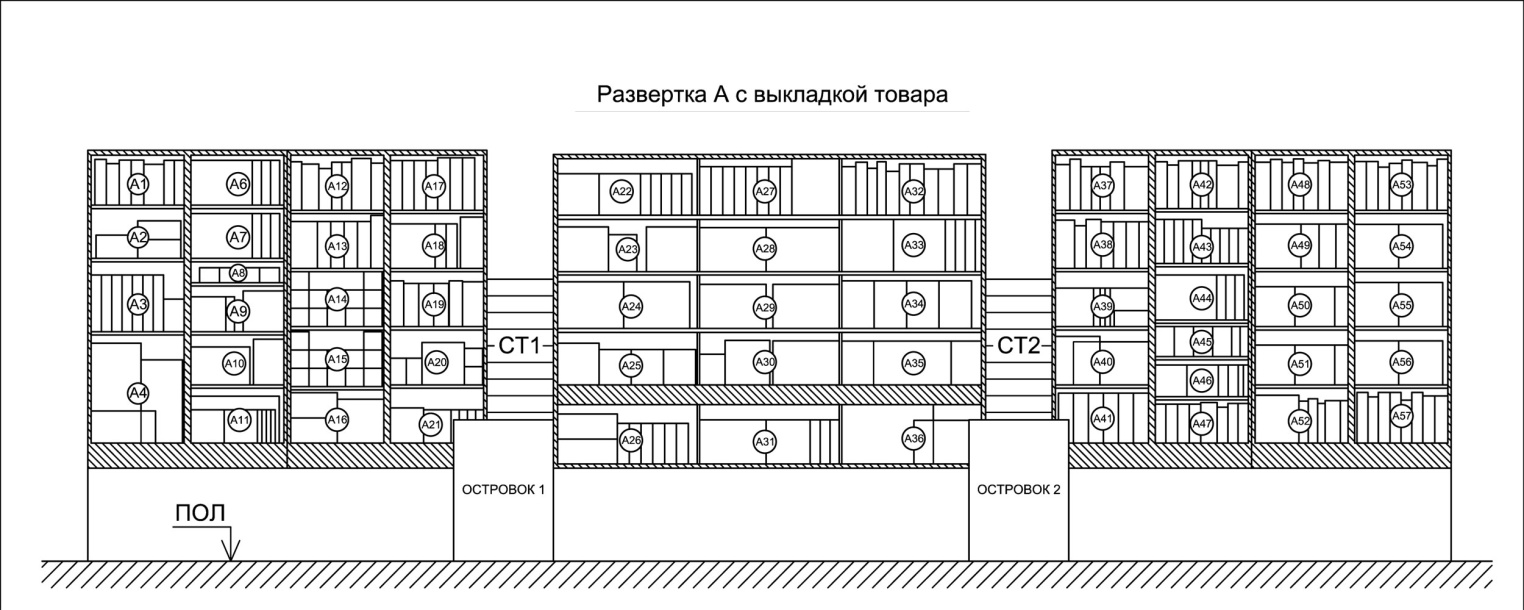
Since the rack with the shelves A1-A4 is located in the very corner, respectively, some of the games are not very well viewed, there are large sizes, there are also games of group B and C. On the rack with the shelves A5-A11 are logical games, A12-A16 are games for parties , A17-A21 - games for the couple. Next is a rack with a different arrangement of shelves. Here are the top positions, A22-A26 - parties, A27-A31 - Monopolies, A32-A36 - strategies. The next rack is fully with children's games.

This is a scan of side B, there are 3 racks completely filled with toys. Closer to the front door, we located a larger product - radio-controlled cars. B1-B5 - designers and products for babies, B6-B11 - dolls and interactive animals, B12-B18 - experiments, robots, B18-B23 - transformers and other toys.
We filled all the free spaces of the walls with nets or economic panels to fill them with smaller goods, thereby unloading the main shelves.
Here, with such XLS files, the retail changes among themselves:
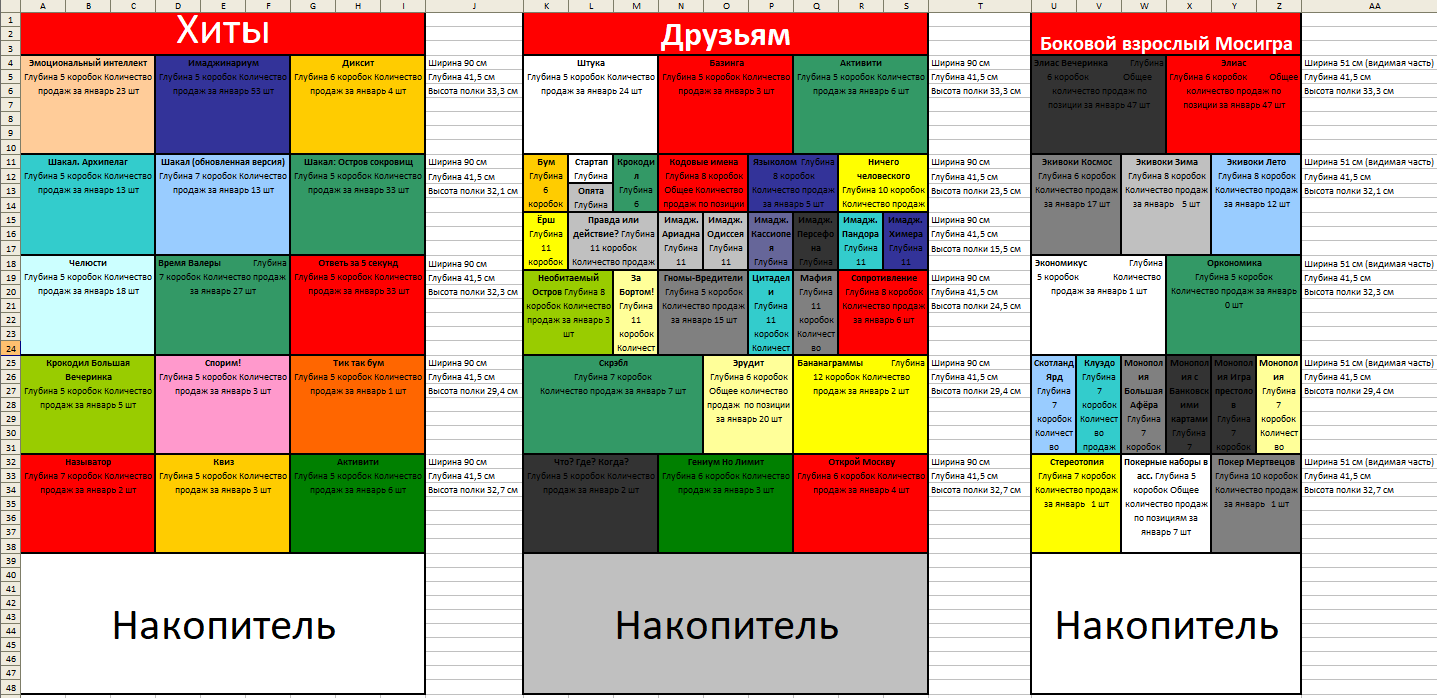
Here you can see the display of goods by the tower without a rack or storage: this is done when there is really a lot of goods. And it really helps sales. But specifically here I would kick the top box, otherwise people will be afraid to disassemble this tower:
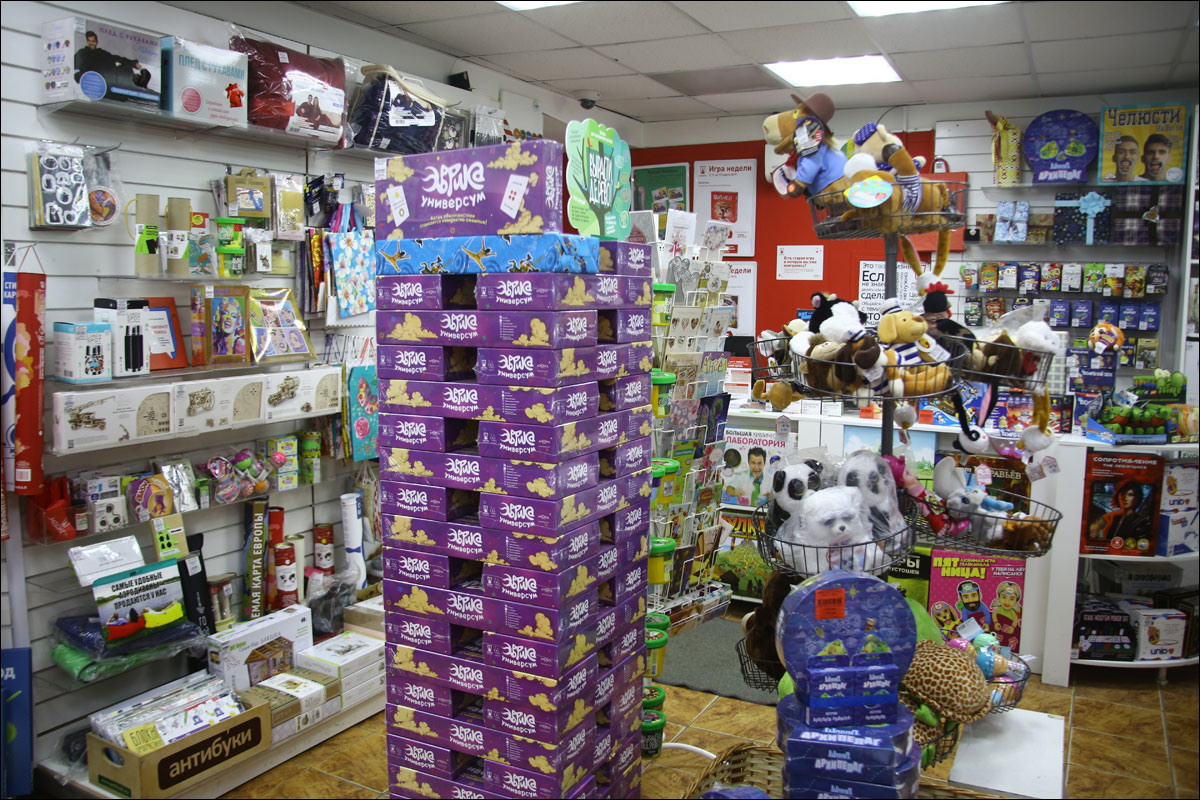
To calculate such a planogram as on the screen, you need to know the sales speed of each game and its value in the assortment - this model of ABC / XYZ analysis is also included .
In the end, all this is decorated - different photographs, gift wrapping on shelves and so on. For example, last week Taganka acquired buttons (each store has its own view on the correct gift wrapping, and Taganskaya was incredibly taught to make bows after the new year, and they evolved): The

checkout counter is laid out separately, there are requirements for goods and materials, for example, this plate should never be blocked by anything:

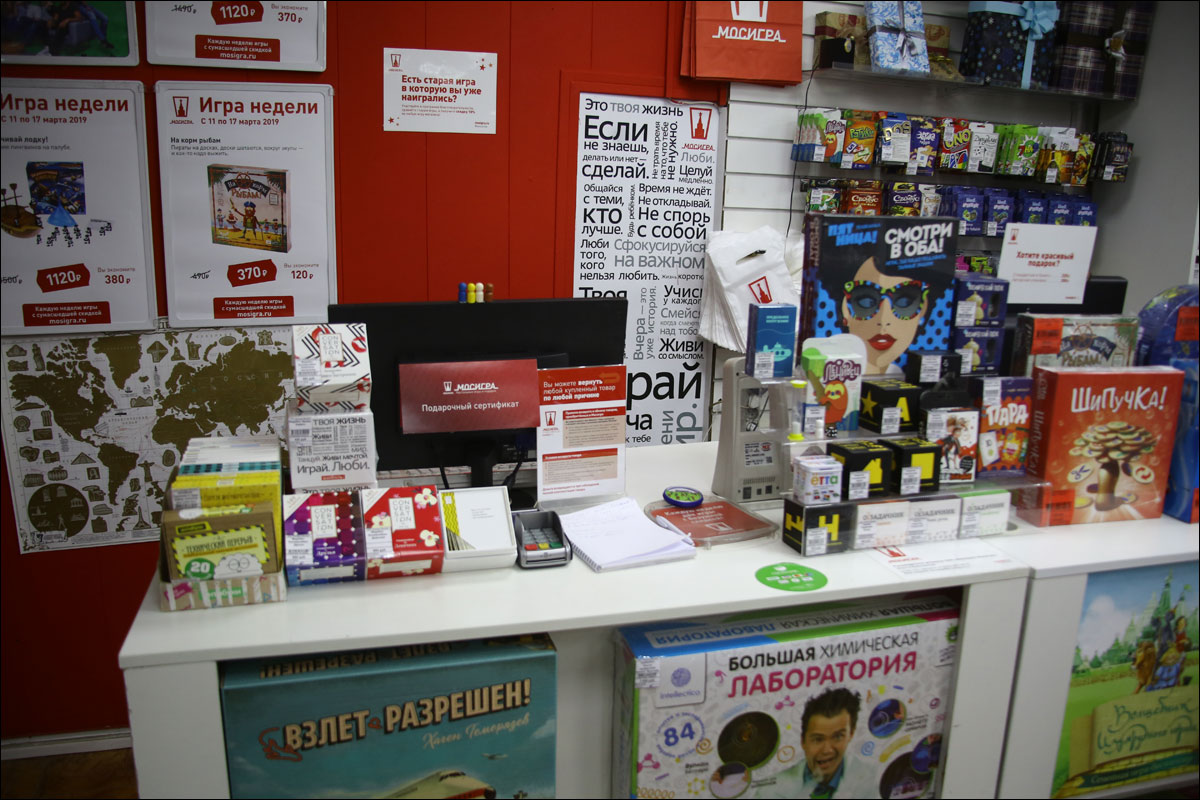
Below you can see large copies of boxes of different games: they lie where hands are not reached, but attract attention. This is the experiment of 2018. And lucky. By the way, they are sometimes trying to buy them, so now we just made stickers:
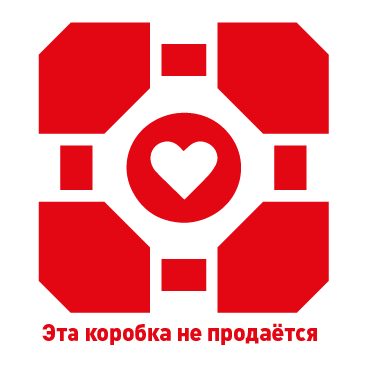
It will also be glued to demo boxes (without contents) that are suspended from the ceiling, for example. They are sometimes brought by suppliers for shop windows. In order not to confuse for sure.
In general, I do not know why this is for you, but I hope it has become a little clearer.
